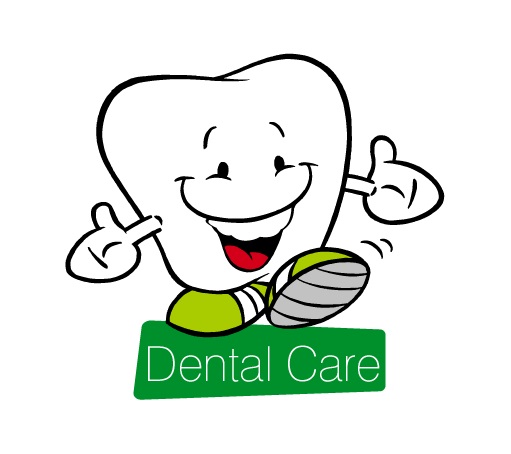




PREVENTIVE
TREATMENTS1. Dental Cleaning
:Teeth cleaning
is part of oral hygiene and involves the removal of dental plaque from teeth with the intention of preventing cavities, gingivitis, and periodontal disease.We recommend getting a dental cleaning every six months. Frequent and regular cleanings prevent cavities, gum disease, and tartar build up and are essential in maintaining good oral health.
2. Dental Sealants
:A dental sealant is a thin, plastic coating painted on the chewing surfaces of teeth to prevent tooth decay. The sealant quickly bonds into the depressions and grooves of the teeth, forming a protective shield over the enamel of each tooth. The most common targets of this treatment are the back teeth (e.g. the premolars and molars).
3. Fluoride Treatments:
Too much demineralization without enough remineralization to repair the enamel layer leads to tooth decay. Fluoride helps prevent tooth decay by making the tooth more resistant to acid attacks from plaque bacteria and sugars in the mouth. Fluoride also reverses early tooth decay.
RESTORATIVE DENTISTRY
Dental Restorations & Fillings
:A dental restoration or dental filling is a
restorative material used to restore the function, integrity and morphology of missing tooth structure. The structural loss typically results from cavities or external trauma.Dental filings involve placement of a malleable filling material into the damaged area. After the material hardens, it provides structural support for the tooth. A dental filling procedure is fairly simple and can be completed in one visit. In addition, we can also remove old amalgam fillings and replace them with newer, more functional composite fillings
.
PROTHODONTICS
1. Dental Crowns:
A
dental crown is a tooth-shaped "cap" that is placed over a tooth. The crown covers the tooth to restore its shape, size, strength, and improve its appearance.Crowns, when cemented into place, fully encase the entire visible portion of a tooth that lies at and above the gum line.
2. Dental Bridges:
Dental bridges bridge the gap created by one or more missing
teeth.A bridge is made up of two or more crowns
on either side of a gap and a false tooth in between. These false teeth are called pontics and can be made from gold, alloys, porcelain, or a combination of these materials. Dental bridges are supported by natural teeth or implants.3. Removable Dentures:
A denture is a removable replacement for missing
teeth and surrounding tissues. Two types of dentures are available: complete and partial dentures. Complete dentures are used when all teeth are missing, whereas partial dentures are used when some natural teeth still remain.4
. Implant-Supported Dentures:An implant-supported denture is attached to implants and supported by them. While regular dentures rests on the gums and is not supported by implants
, implant-supported dentures require surgery to first place the implants. However, this type of prosthesis is ultimately more comfortable and stable, allowing the user easier speaking and chewing abilities.Dental implants are a popular and effective way to replace missing teeth and are designed to blend in with existing natural teeth. They are an excellent long-term option for restoring your smile. Dental implants are made up of titanium and other materials that are compatible with the human body. They are posts that are surgically placed in the upper or lower jaw, where they function as a sturdy anchor for replacement teeth.
Chronic illnesses, such as diabetes or leukemia, may interfere with healing after surgery. Thus, patients with these implications may not be good candidates for implants. Tobacco usage may also slow healing.
P
ERIODONTICS1. Deep Scaling and Root Planning:
Scaling and root planning is a deep cleaning below the gum line used to treat
gum disease. This deep cleaning has two parts. First, scaling removes all the plaque and tartar (hardened plaque) above and below the gum line, cleaning all the way down to the bottom of the tooth pocket. Root planning then smoothes out the roots of the teeth to help the gums reattach to them. The entire treatment may take more than one visit to complete and require a local anesthetic.2. Crown Lengthening:
Crown lengthening is a surgical procedure performed by a dentist to expose a greater amount of tooth structure for the purpose of subsequently restoring the tooth prosthetically.
ENDODONTICS
Root Canal Treatment
COSMETIC DENTISTRY
1. Veneer Treatment:
Dental veneers
(also known as porcelain laminates) are wafer-thin, custom-made shells of tooth-colored materials designed to cover the front surface of teeth to improve their appearance. These shells are bonded to the front of the teeth in order to change the original tooth's color, shape, size, or length.2
. Zoom Whitening:Zoom whitening is a
teeth-bleaching procedure performed in a dentist's office. After a hydrogen peroxide gel is applied to the teeth, an overhead lamp delivers UV light to the area, breaking down the activated gel. This allows oxygen to enter the enamel and dentin, bleaching the colored substances while leaving the structure of the teeth intact. Some users experience comfortable procedures, while others have reported temporary sensitivity following treatment. Treatments typically last about an hour and may result in up to eight shades of improvement in color.